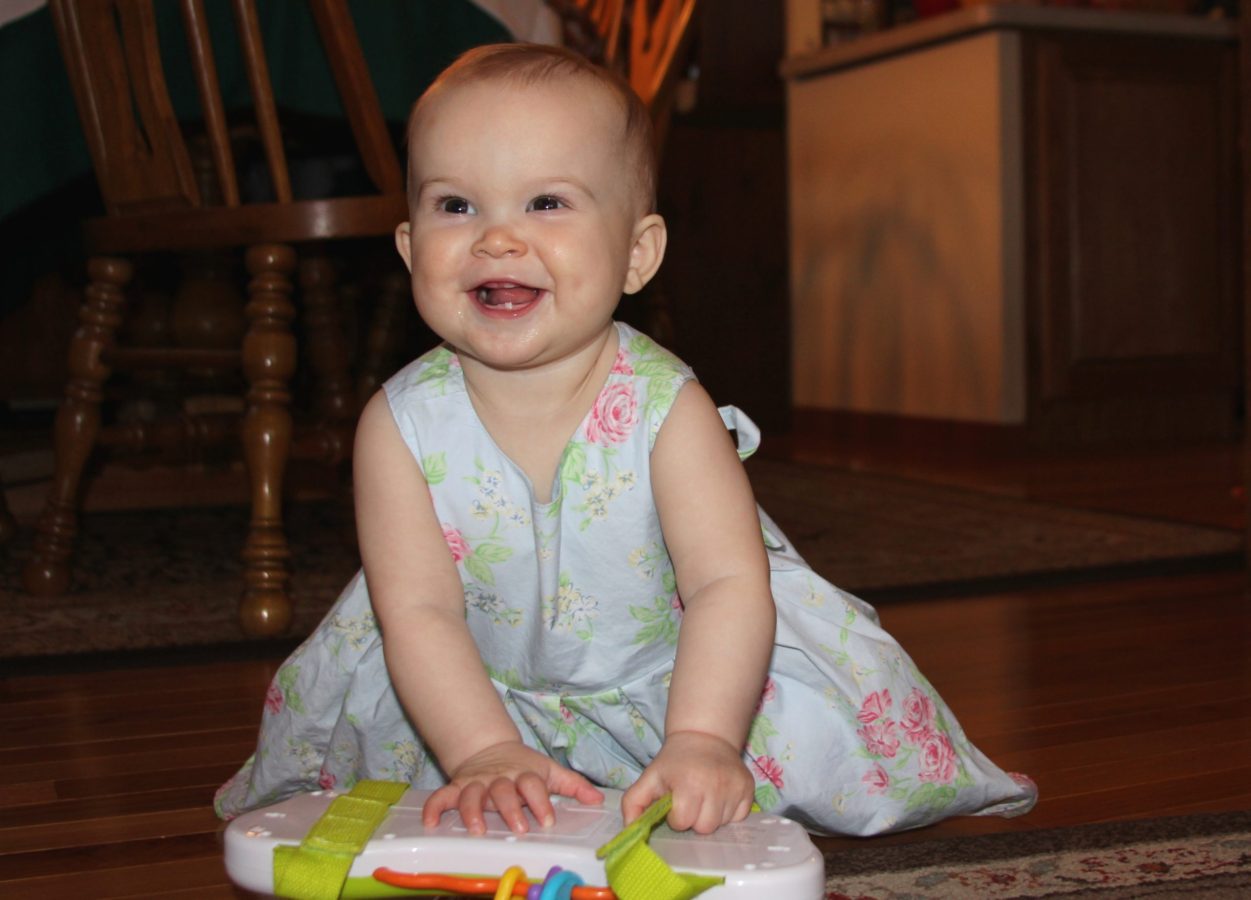It was a bright red spot of blood, early on a Monday morning that changed everything I knew about the joys of pregnancy. The sinking feeling I felt that day will remain with me forever.
I was in my ninth week of pregnancy; things were going well-in hindsight, almost too well. I didn’t feel tired like I did when I was pregnant with my daughter, nor did I put on those few extra pounds right away. My running felt great, and I was able to keep my mileage and pace up without strain. Everything was perfect-until that little spot of blood appeared.
We saw the doctor first thing that morning and were sent for an ultrasound. There was no heartbeat and just six to seven weeks of fetal development. I was miscarrying.
Miscarriage, technically called “spontaneous abortion,” occurs in about 15 – 20 percent of all confirmed pregnancies under 20 weeks gestation. The statistics are much higher for unconfirmed pregnancies, happening before pregnancy is yet clinically recognized. Classified as threatened, inevitable, incomplete, or missed, a miscarriage is typically accompanied by spotting, bleeding, cramping, and pain.
Not all bleeding and cramping is indicative of miscarriage; spotting occurs in about 20 – 30 percent of all pregnancies. Cramping at some point in the first trimester is also common. However, Dr. Myriah Mathisen, an OB/GYN with Health Partners in Bloomington, encourages women to contact their physician with any bleeding or signs of cramping during pregnancy. “If a miscarriage has started, nothing can be done to stop it,” says Mathisen, “and there is likely nothing the woman could have done to cause it.”
Most miscarriages can be attributed to chromosomal abnormalities at conception, problems that will never be fully explained. Often the problem occurs during the development of the egg or sperm, or at fertilization; they are problems that usually do not recur in subsequent pregnancies. It is not until after a woman has three consecutive miscarriages that her odds of miscarrying again drastically increase. Other, less common explanations for miscarriage include uterine abnormalities, hormone imbalances, and other nongynecological problems such as endocrine, autoimmune, and clotting disorders.
First trimester bleeding could also be the result of a blighted ovum, molar pregnancy, or an ectopic (tubal) pregnancy. An ectopic pregnancy, in particular, requires immediate medical attention. It’s important to seek medical advice if you think you might be miscarrying.
To confirm a miscarriage, physicians usually perform a physical examination, including a pelvic exam, blood test to measure hormone levels, and an ultrasound. Women should also be tested for Rh factor (positive or negative blood type) and be given an antibody for future pregnancies if they are Rh negative.
The three main options for treating miscarriage include dilation and curettage (D&C), medical management, and expectant management (natural miscarriage). A D&C is a surgical procedure performed under general anesthesia in which the cervix is dilated and the uterus manually cleaned. Medical management includes the administration of drugs to speed along the miscarriage. The least invasive, expectant management, means watchful waiting, three to four weeks at most, to let the miscarriage complete on its own.
Oftentimes, treatment options will depend on how many weeks pregnant a woman is. Typically, the farther along you are, the harder the miscarriage can be physically. Dr. Susan Ditmanson, an Obstetrician/Gynecologist with Parkview OB/GYN in St. Paul, says many women are not prepared for the amount of blood and potentially painful cramping of a natural miscarriage. Each treatment option has its own benefits and challenges. “A D&C can be hard,” she says. “For some women, it ends things too fast. Very quickly a woman goes from being pregnant to not being pregnant. Some women need more time to process the loss.”
Waiting for a natural miscarriage can be psychologically difficult, but it avoids the risks of uterine perforation and scarring that go along with any uterine surgical procedure. It’s important to assess your treatment options with your doctor.
Follow-up is equally important since there is always a risk of infection. Mathisen likes to see her patients in the office two weeks after a miscarriage, sometimes again after that. “Psychologically, miscarriage can be devastating to patients. It’s important for physicians to assess a women’s support network and emphasis that she did nothing to cause it.”
I spent the week I miscarried at home. First, waiting for the inevitable. Then, praying it would stop. I wasn’t prepared for the amount of blood and tissue I lost-I was faint, weak, and tired. I vacillated between being in control and devastated, as I called those with whom I shared the joy of my pregnancy to tell them the awkward news of my miscarriage. In quiet moments, I questioned myself. Was this my fault? Maybe I wasn’t excited enough for this baby. Maybe I should have stopped running and biking.
Although it’s not a good idea to take up new athletic endeavors while pregnant, moderate exercise is recommended during a healthy pregnancy. Focus on making healthy lifestyle choices. Smoking, alcohol use, and drugs have all been linked to miscarriage. Even excessive caffeine-more than four to five cups per day-has been linked to miscarriage in some studies.
Ditmanson recommends patients wait until after having two normal menstrual cycles before trying to conceive again. “After miscarrying, a woman needs to get her body back to normal first,” she says, “then she needs to decide if she is ready to try emotionally.”
If you are physically ready to try again, it may be the best thing for you emotionally. According to Dr. Linda Hammer Burns, a licensed psychologist specializing in infertility and pregnancy loss at the University of Minnesota Reproductive Medicine Center in Minneapolis, “Research shows that pregnancy helps people recover psychologically from miscarriage. They deal better with their loss and have a greater appreciation for pregnancy in general.”
It took awhile to recover emotionally from my miscarriage. With weekly lab appointments to check hormone levels, it was always on my mind. My daughter still talks about the “broken baby.” And, despite it being little more than the length of a regular menstrual cycle, waiting to get my period after miscarrying seemed like an eternity. It was a month filled with unknowns and questions. As for trying again, welcome to the world of obsession, thermometers, and ovulation predictor kits.
If you look hard enough, you can find something good in every experience-even the sorrowful. I’ve learned that many of my friends went through the same thing, and I experienced the compassion of some amazing women. I learned to be more sensitive to others’ feelings when asking that ill-mannered question: “When are you going to have more kids?” I’ve grown closer to my husband and friends. And, while I question my body more, I know more about how it works. If my husband and I are blessed with another pregnancy, I will happily gain 40 pounds again.




















